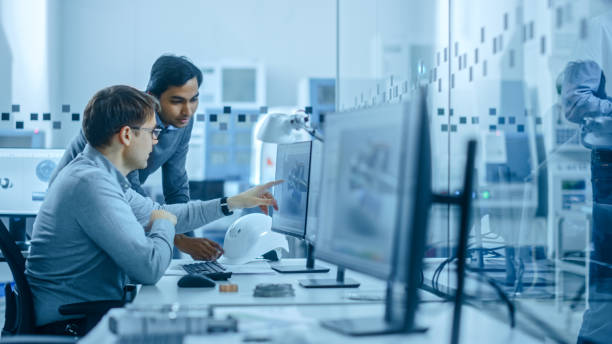
Artificial intelligence is revolutionizing the healthcare industry with seamless services. It is a solution that the world has been waiting for, and it became even more necessary during the ever-growing number of online medical appointments. AI-driven applications as a component of the diagnostic process face new challenges with changing responsibilities, so let us consider it in more detail.
Technologies in healthcare
Healthtech has come a long way since the first x-ray machine and whole-body CT. The increased accessibility of mobile internet, the popularity of remote patient care, and an aging global population are all driving changes in the healthcare industry, and the related technology is changing faster than ever before. According to data provided by the World Economic Forum, more than 50% of the healthcare organizations workforce is projected to re-examine their professional skills in the next couple of years.
Many of the most interesting new healthcare software technologies in medicine need to be used together, and integrated attempts to do so already exist. Some tech-inspired clinics take a concierge-like approach to primary care, putting healthtech development to use in a way that providers get more quality time with their patients. But that is just the beginning.
When the Covid-19 pandemic pushed healthcare into the future, several promising medical technologies were eventually tested among a large number of healthcare organizations. In 2022, the question is how those technologies can be used together with patient care in a post-pandemic world.
AI is considered as “the ability of a machine to perform cognitive functions that we associate with human minds, such as perceiving, reasoning, learning, interacting with the environment, problem-solving, decision-making, and even demonstrating creativity”.
AI and machine learning reimagined the modern conception of healthcare delivery. It is now one of the world’s fast-growing areas. The AI-based applications sector was valued at about $600 million in 2014 and is projected to reach $150 billion by 2026. AI has countless perspectives in healthcare. Whether it’s being used to discover links between genetic codes, to power surgical robots, or even to maximize hospital efficiency, AI is a boon to the healthcare industry.
To this day, modern medical applications, including healthcare and disease diagnostics, are developed using machine learning. Algorithms utilize medical data to provide predictive analysis and continuously learn and develop over time by constantly processing new and updated data. AI-driven medical software is responsible for the following features:
- drug manufacturing;
- medical imaging software;
- identifying diseases;
- personalized care;
- ML-based behavioral modification;
- smart health records and more.
In this article, we will concentrate on one of the most promising designations – applying artificial intelligence and machine learning for identifying and diagnosing diseases.
Disease diagnosis by using AI & ML
Healthtech’s development demonstrates the potential to improve traditional medical practice and patient care. It rationally integrates multi-faceted tech functions with all previous earlier interventions for advanced diagnostics and more tailored treatment.
The AI-driven app can detect the red flags of certain diseases within patients’ electronic health records and warn physicians of discrepancies with the norm. In this connection, artificial intelligence plays the role of an outside observer which can assess a patient’s health on the basis of knowledge derived from large data sets by summarizing the millions of disease observations that a patient could have.
Benefits for patients
The application of artificial intelligence can be used to identify key disease aspects by predictive modeling of complex and heterogeneous datasets for the progression and treatment of cancerous conditions, risks, and outcomes. For example, ML algorithms, such as deep learning, genetic algorithm, and others, are capable of the following:
- predict the risk of a major adverse cardiac event;
- diagnose mental illnesses and sleep disorders;
- identify imaging biomarkers of neurological and psychiatric diseases;
- detect knee osteoarthritis;
- predict the depression elements in cancer patients;
- assess the risk of complex diseases (e.g. tuberculosis, breast cancer, coronary heart disease), and many others.
Associated risks
There are a few risks when it comes to applying health technologies for diagnosing diseases.
- AI-driven applications can’t replace a physician and offline appointment. Even though AI and ML help to predict the probability of contracting a disease, it does not replace all the work a specialist does.
- The success and accuracy of healthcare software depend on good data. The data is useless if it is provided in bad quality. Furthermore, it is a significant risk when there’s a discrepancy between existing patterns and new incoming data. Patient data is protected by strict privacy and security rules. It is quite complicated to assemble, share and distribute the incoming information. In addition, there are challenges with the format and quality of data which usually require significant effort to clean and prepare for diagnosis.
- Healthcare organizations need to use cutting-edge AI-based technologies. In many cases, updating leverage medical software is not part of a doctor’s line of work. It can be difficult for a physician to manage with the verification of data and results. Continuing to use outdated software that no longer makes reliable projections can be potentially harmful to human health. It is also unsafe to change a verified and well-tested software for one that might not work.
Conclusion
Innovative medical diagnosis software delivers intelligent and holistic diagnoses while striving to minimize the chance of error. AI and ML technologies are involved in completing a wide range of tasks, from finding new links between symptoms to driving surgery-assisting robots. Artificial intelligence is redefining modern healthcare through machines that can predict, comprehend, learn and act.
However, there is still not enough quality data available, so for now it is always better to compare and check the incoming diagnosis.
Authors bio:
Egor Bulyhin, CTO at Smart IT, speaks on social media around the world focusing on software development strategy for Fintech, Healthtech, and other hi-tech areas. A former Project Manager and Lead Software Engineer, Egor practiced for more than 15 years on multiple IT projects before sharing his experience.














